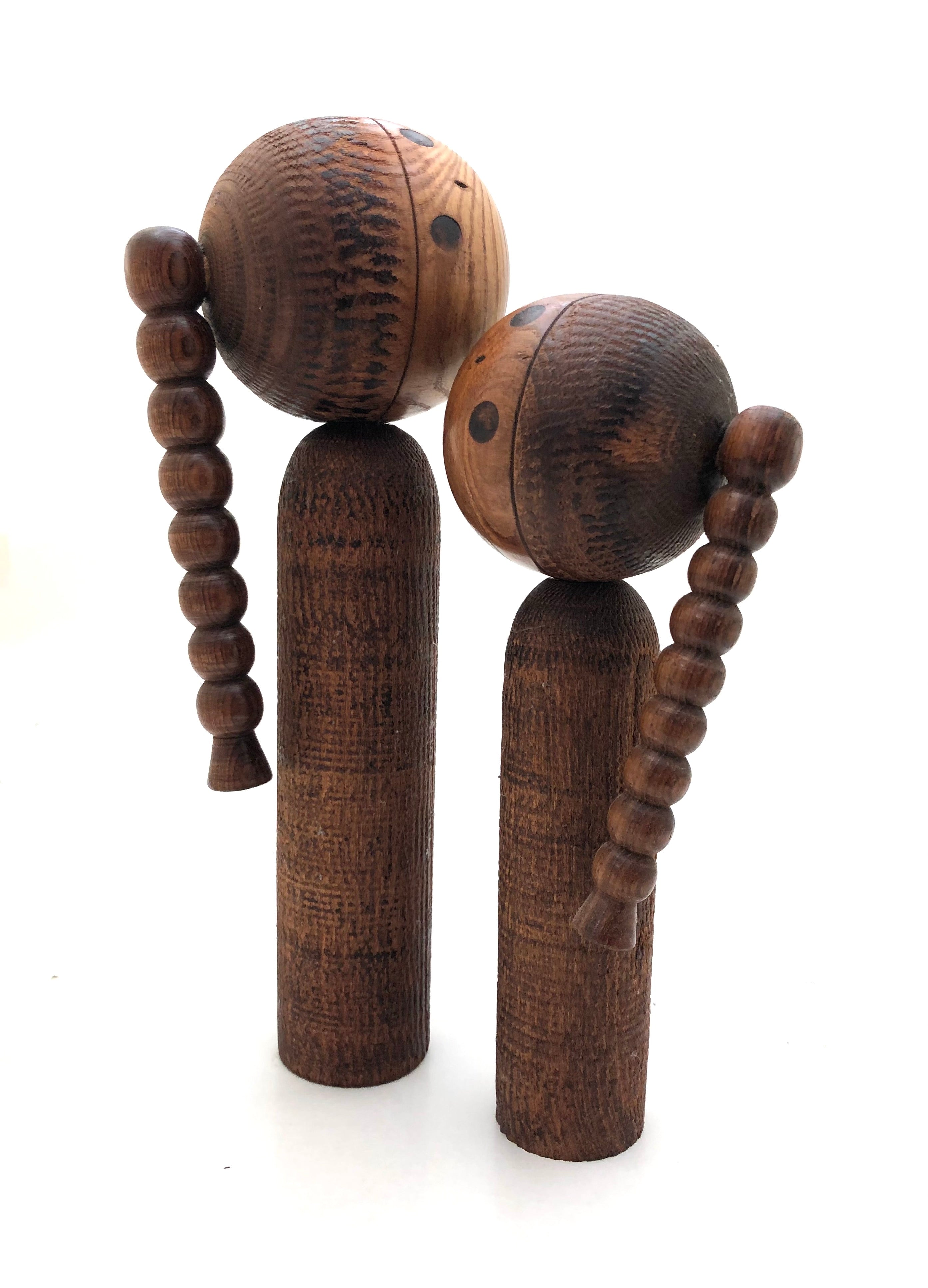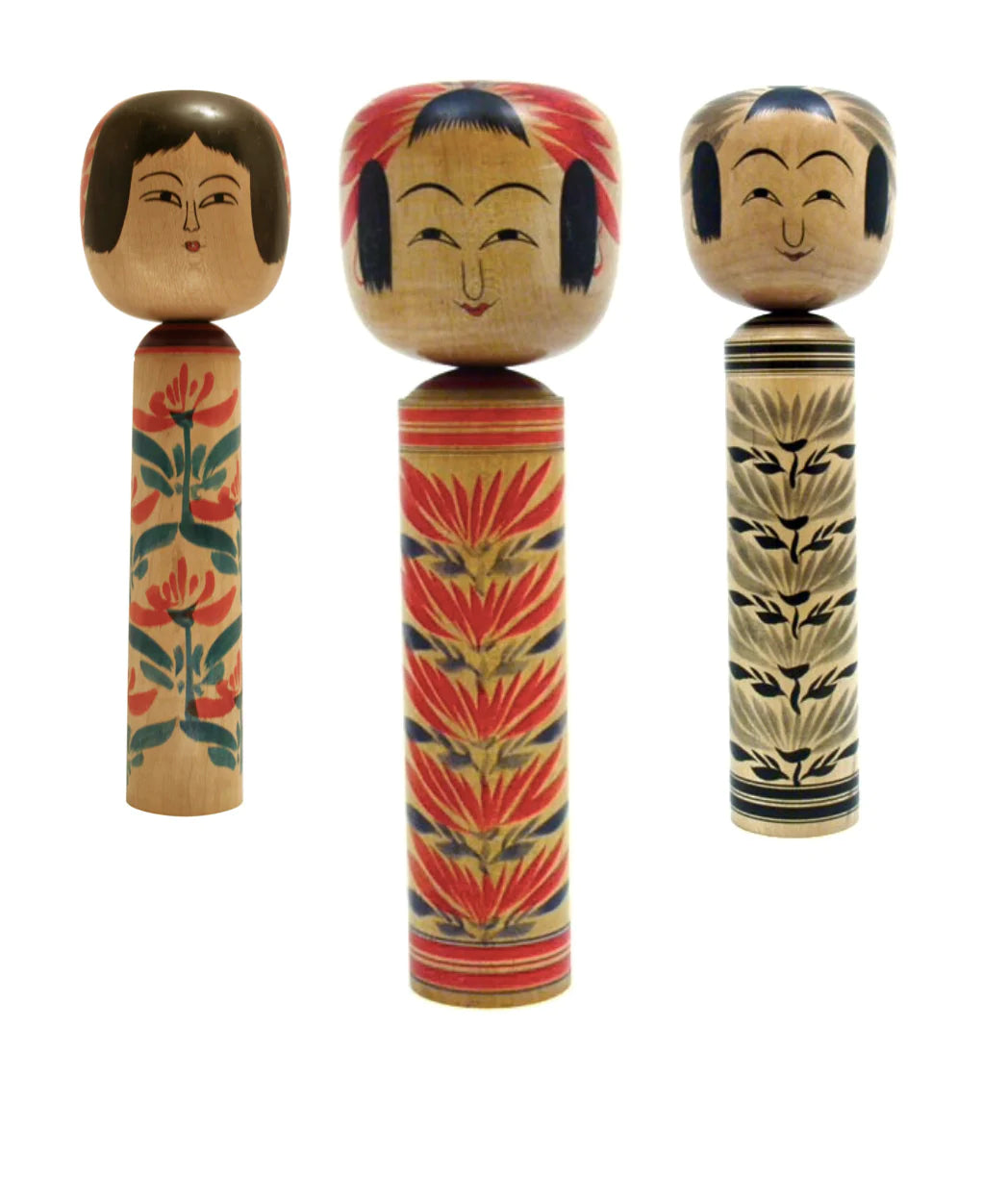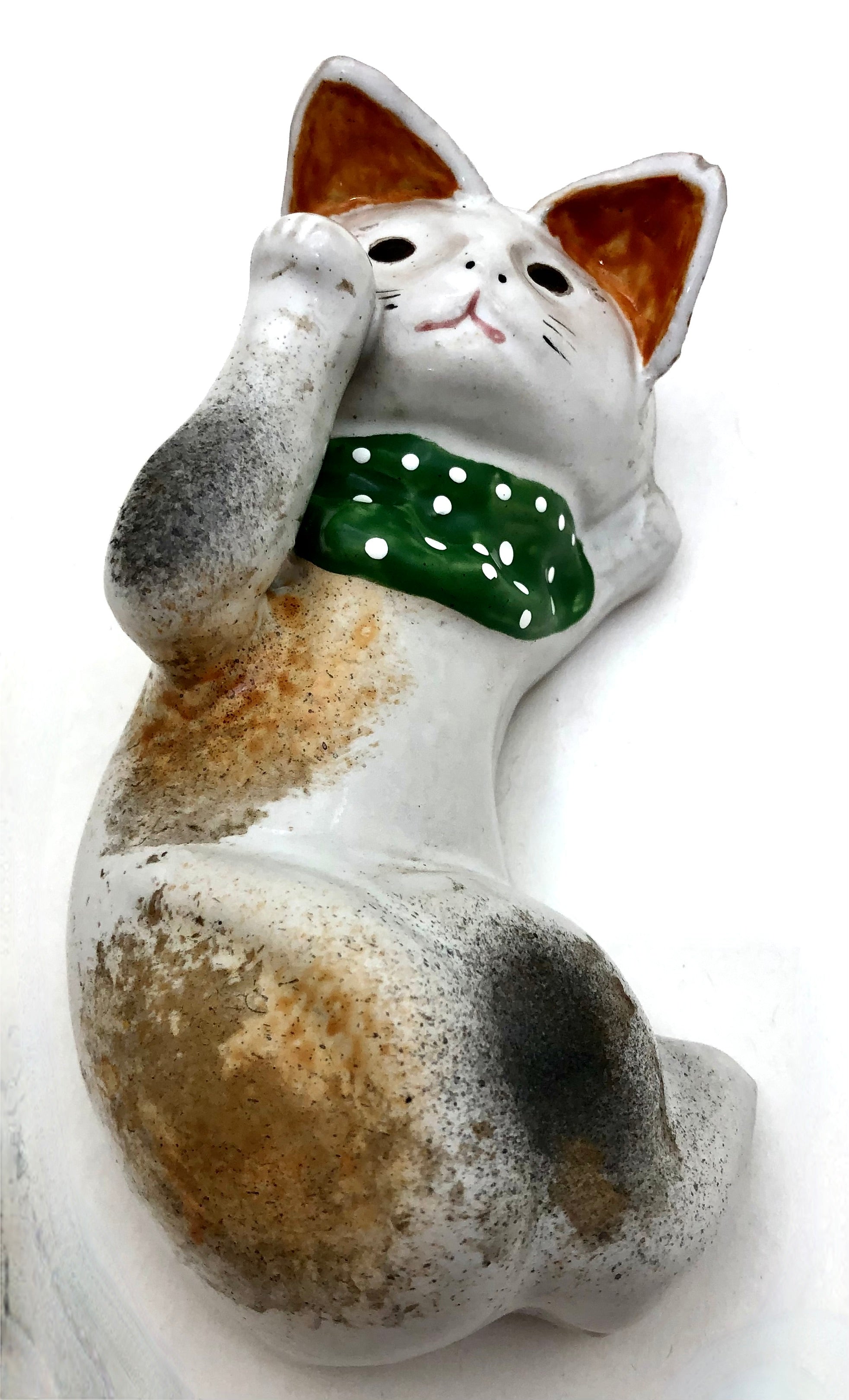
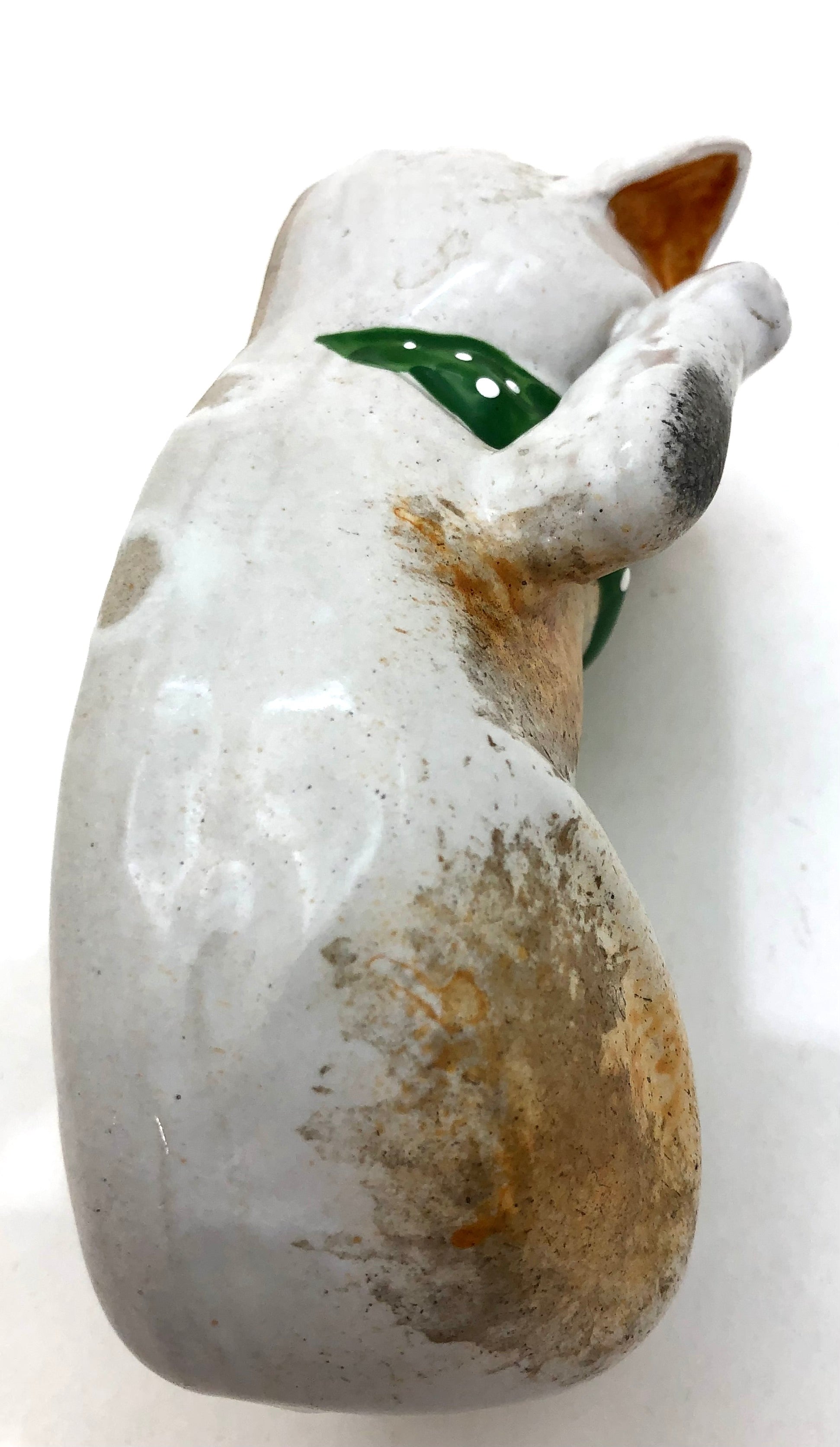
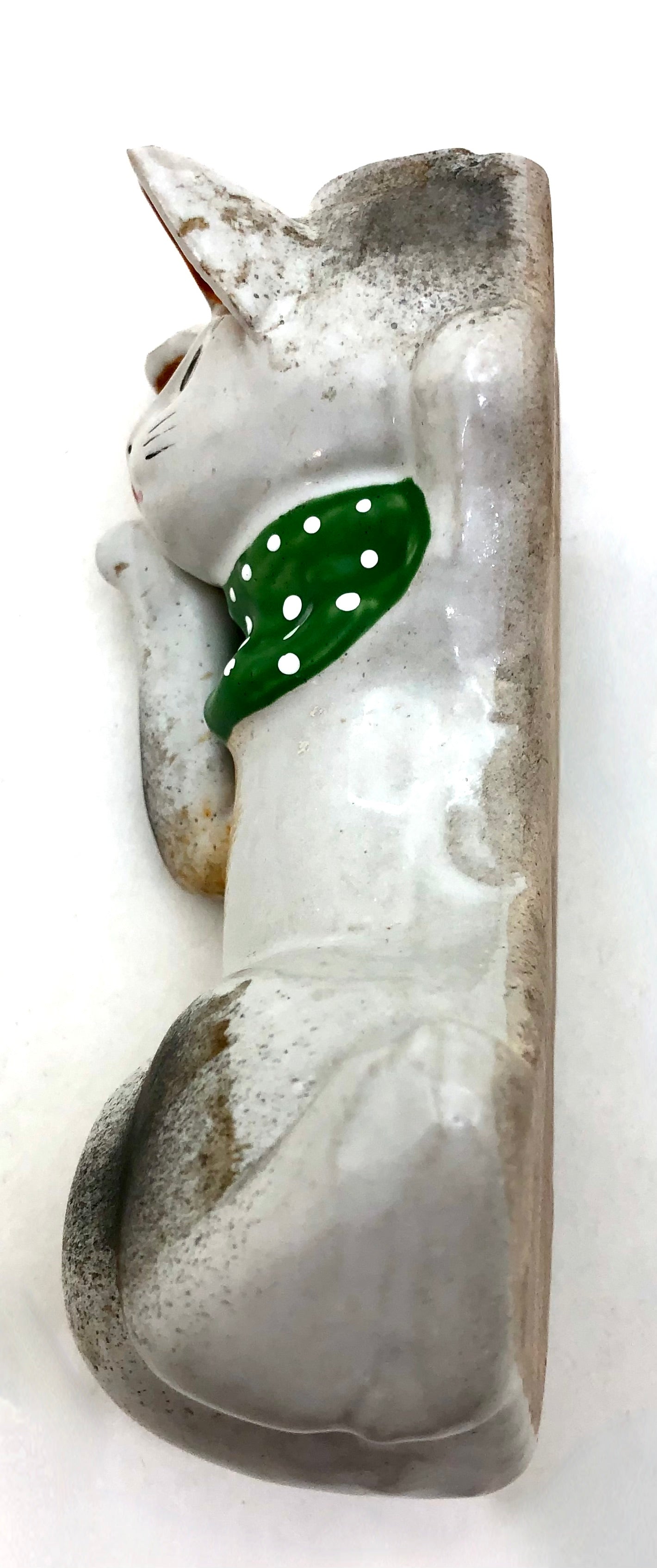

Vintage Japanese Maneki Neko (Japanese Beckoning Cat) Wall Vase
All our items ship free in the US
Dimensions: 5-1/2”h
Offered is a Japanese Mikawa Maneki Neko made of porcelain and natural pigments representing a calico with spotted slivery grey, gold, orange, and black spots throughout the body, a true roughen of the fields and temples of Japan where he protected the property from vermin. This wonderful character is shown with a neck scarf green with white polka dots, expressive eyes, ears, mouth, and whiskers. Beautiful aged patina and natural wear provide luck and happiness. Often displayed in a prominent place they are a lucky mascot known to greet family and friends and for which the right paw raised is said to bring money and financial good fortune to its owner. It has a nice pocket in the interior to support some flora but typically a long-growing ivory symbolizing vitality.
To invite the most good fortune, the standard location to place a maneki neko within the house is at the front entrance. The reason is that the most logical place for people or monetary luck to enter a house is through the front door. As a final perspective September 29th is considered Maneki Neko day and was chosen because, in Japanese, 9 can be read as "ku" and 2 can be read as "fu," so 9/29 represents the phrase "kuru fuku", meaning "come, good fortune." There is a hole in the back for hanging in an appropriate place. Unsigned.
During the Edo Period (1603 - 1680), there weren't that many cats around, only a portion of people could keep cats. They remained out of reach of most commoners. There are many theories about the origin of the maneki neko, including one that claims Gotokuji Temple in Tokyo's Setagaya Ward as the birthplace, or another that says it started at Jishoin Temple in Shinjuku. Some say that the model for the maneki neko was likely intended to represent self-grooming.
Condition: Very Good for its age and use, and has a developed character absent of damage, chipping, or loss of color.
Return Policy
Our antique/vintage pieces are identified/described and professionally photographed, and considered, “as is”, therefore all sales are final. Read our full refund and return policy.

